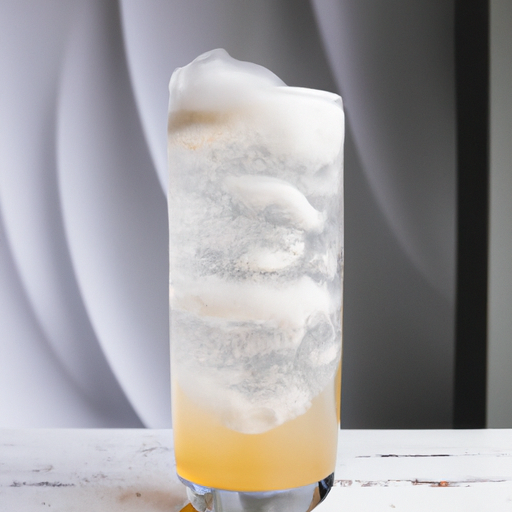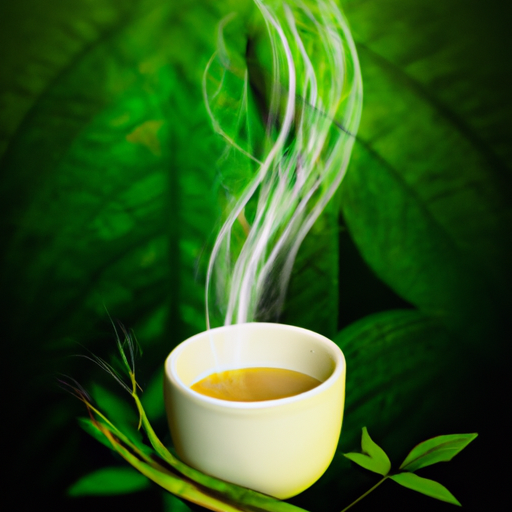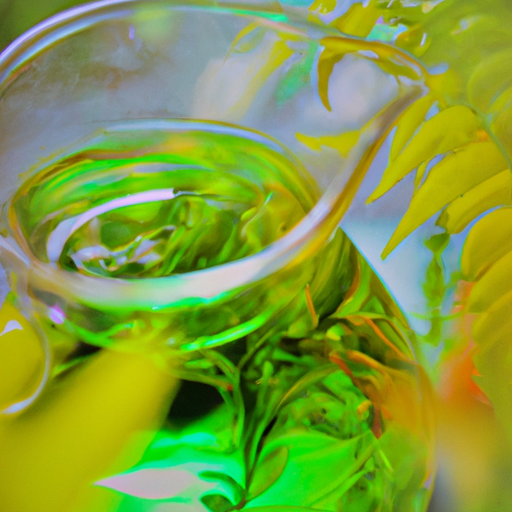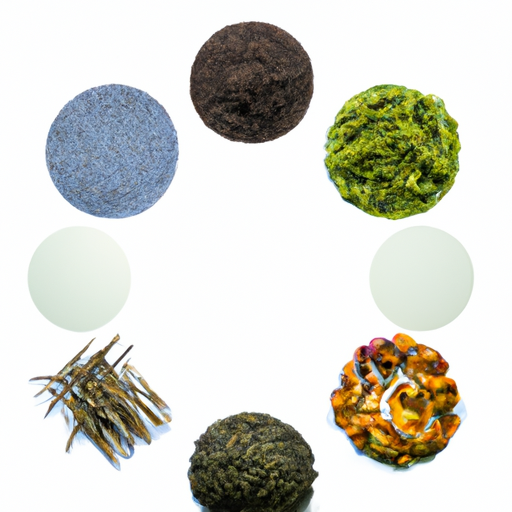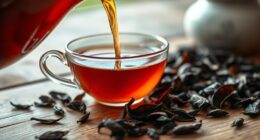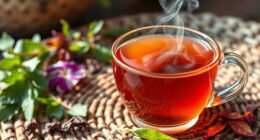Darjeeling tea is commonly known as the Champagne of Tea due to its exquisite flavor profile and origin in the Himalayas. With hints of apricot and peach, along with a floral aroma, this tea stands out among other black teas.
Grown in the picturesque Darjeeling district of India, this tea is meticulously hand-plucked and processed by skilled women in nearby factories. Renowned for its high quality and unique characteristics, Darjeeling tea is available in various varieties, including white, green, and oolong, apart from the traditional fully oxidized black tea.
In contrast to Darjeeling tea, Assam tea is known for its rich, malty, and robust character, while Nilgiri tea offers bright and brisk liquors with captivating flavors and fragrances. India’s three major tea-producing regions, Assam, Darjeeling, and Nilgiri, each contribute their own distinct teas to the world.
Notable Darjeeling tea estates such as Castleton, Glenburn, and Margaret’s Hope have gained recognition for their exceptional teas.
If you’re seeking the best Darjeeling tea experience, now is the opportune time to indulge in the First Flush spring teas. So, join me as we embark on a journey to discover the exquisite flavors and aromas of Darjeeling tea, the Champagne of Tea from the Himalayas.
Key Takeaways
- Darjeeling tea is often referred to as the Champagne of Tea.
- It is grown in the Himalayas and has a delicate taste with flavors of apricot and peach.
- The tea is hand-plucked and processed by skilled women in nearby factories to preserve its unique flavors and aromas.
- Darjeeling tea comes in different types, including white, green, oolong, and black varieties, each with its own distinctive character and brewing requirements.
What is it?
Darjeeling tea, often referred to as the Champagne of Tea, is a light black tea grown in the Himalayan foothills. It is known for its delicate taste with a fruity apricot peach flavor. Darjeeling tea comes in different types, including white, green, and oolong varieties, but the traditional and most popular form is fully oxidized black tea.
The tea leaves are hand-plucked from the Darjeeling district of India and processed by women in adjoining factories. The processing of Darjeeling tea is crucial in preserving its unique flavors and aromas. After plucking, the leaves undergo withering, rolling, oxidation, and drying to achieve the desired taste and appearance.
This careful processing ensures that Darjeeling tea maintains its signature floral aroma and distinctive character.
Characteristics and Varieties
When exploring the characteristics and varieties of this exquisite beverage, I find it fascinating to learn about the different cropping periods, such as the First Flush, Second Flush, and Autumnal Flush, each offering a unique flavor profile and aroma.
For example, during the First Flush, the tea leaves are young and tender, resulting in a light and delicate brew with hints of floral notes and a subtle sweetness.
Darjeeling tea varieties: Darjeeling tea isn’t only available in its traditional fully oxidized black form, but also in white, green, and oolong varieties, each with its own distinct characteristics and brewing techniques.
Flavor profiles and brewing techniques: Darjeeling tea exhibits a soft flowery scent and a delicate taste with fruity apricot and peach flavors. To fully enjoy its nuances, it’s recommended to brew Darjeeling tea at a lower temperature for a shorter duration.
Health benefits: Darjeeling tea isn’t only a delightful beverage but also offers various health benefits. It’s rich in antioxidants, aids digestion, promotes heart health, and boosts the immune system.
Tea tourism in Darjeeling: The region of Darjeeling isn’t only renowned for its tea production but also attracts tea enthusiasts from around the world. Tea tourism allows visitors to experience the tea gardens, learn about the tea-making process, and indulge in tea tasting sessions, making it a unique and immersive experience for tea lovers.
Best Time to Buy
I recently discovered the best time to purchase Darjeeling First Flush spring teas is now. This is the most sought-after harvest, known for its delicate and exquisite flavors. The First Flush teas are plucked during the early spring, just as the tea bushes awaken from their winter dormancy. The leaves are tender and abundant, resulting in a tea that is light and refreshing with a unique floral aroma.
To further emphasize the significance of this harvest, let me present you with a table showcasing the differences between the First Flush and Second Flush:
| First Flush | Second Flush |
|---|---|
| Light and delicate | Rich and full-bodied |
| Floral and fresh | Muscatel and fruity |
| Bright and pale liquor | Dark and amber liquor |
As you can see, the First Flush offers a completely different experience compared to the Second Flush. So, if you want to indulge in the true essence of Darjeeling tea, now is the perfect time to explore the availability of these exquisite First Flush teas.
Frequently Asked Questions
What is the history and cultural significance of Darjeeling tea in the Himalayan region?
Darjeeling tea has a rich history and cultural significance in the Himalayan region. Its origins can be traced back to the British colonial era, and it has become an integral part of the local culture and economy.
How does the unique geography and climate of the Darjeeling district contribute to the flavor profile of the tea?
Geographical influences in the Darjeeling district, such as the high altitude, cool temperatures, and misty climate, contribute to the flavor characteristics of Darjeeling tea. These factors result in a delicate and fruity taste with a soft flowery aroma.
What are the different processing methods used to create white, green, and oolong varieties of Darjeeling tea?
To create white, green, and oolong varieties of Darjeeling tea, different processing methods are employed. These methods, such as withering, rolling, and oxidation, result in distinct flavor profiles ranging from delicate and floral to grassy and complex.
Are there any health benefits associated with drinking Darjeeling tea?
Exploring the medicinal properties of Darjeeling tea, it is known to have antioxidants that support heart health and boost immunity. Evaluating the nutritional value, it contains vitamins, minerals, and polyphenols that contribute to overall well-being.
How has the global demand for Darjeeling tea impacted the local economy and tea industry in the region?
The global demand for Darjeeling tea has had a significant impact on the local economy and tea industry in the region. It has provided income opportunities for farmers and influenced the market dynamics of the global tea industry.
Conclusion
After exploring the exquisite world of Darjeeling tea, one can’t help but be captivated by its enchanting allure. With its delicate flavor and soft flowery aroma, this tea truly lives up to its title as the Champagne of Tea. The Himalayan foothills provide the perfect conditions for this unique brew, showcasing its fruity apricot peach notes.
From the fully oxidized black tea to the white, green, and oolong varieties, Darjeeling tea offers a range of options to suit every discerning palate.
As for the best time to indulge in this luxurious treat, now’s the perfect moment to savor the First Flush spring teas.
So, let’s raise our cups and toast to the unparalleled elegance of Darjeeling tea, a true gem among the tea connoisseurs.



